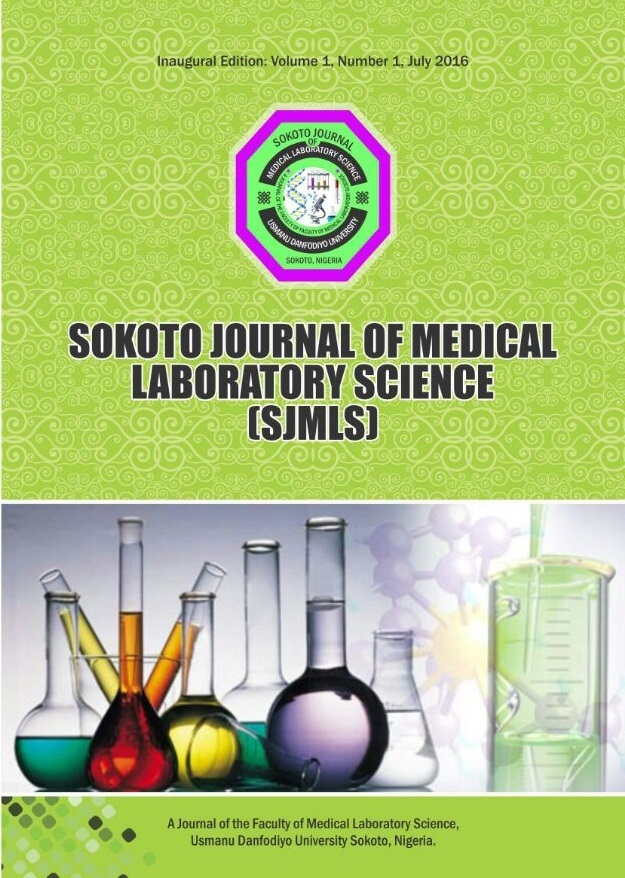Characterization and Susceptibility Pattern of Aerobic Bacterial Pathogens Isolated from Surgical Site Infection at Murtala Muhammad Specialist Hospital, Kano.
Keywords:
Antimicrobial, Susceptibility, Bacterial Pathogens, Surgical Site Infection, KanoAbstract
This study was a hospital- based cross- sectional descriptive study aimed at evaluating the characterization and susceptibility pattern of aerobic bacterial pathogens where clinical samples of wound swabs were aseptically collected from 364 patients with clinical evidence of post operative wound infections. Specimens were cultured for colony characteristics followed by direct Gram stain and biochemical tests for identification of pathogenic bacteria. Antibiotic susceptibility testing was done using a modified form of the Kirby Bauer method. Methicillin resistance Staphylococcus aureus (MRSA) was screened by Disc diffusion test using and phenotypic tests for screening extended spectrum beta lactamase (ESBL) on all gram-negative isolates using a double disk synergistic method. The mean age of the patients was 28.8 years, male was 210 (58%) and 154 (42%) female. Of the 364 swab samples, bacterial growth was obtained in 350 (96%) with positive culture and remaining 14 (4%) showed no growth. A total of 380 bacteria 345(90.79%) mono-isolate and 35(9.21%) mixed growth was isolated from the swabs with 300 (78.95%) gram negative bacilli. E. coli was the most predominant followed by Pseudomonas aeruginosa, Klebsiella pneumoniae, Proteus mirabilis, Proteus vulgaris, Citrobacter species, Enterobacter species, while 80(21.0%) were gram positive cocci. Staphylococcus aureus was more prevalent 64(16.48%) followed by Coagulase negative Staphylococcus (CoNS) with 15(3.94%) and the least was Enterococcus feacalis 1(0.25%). Majority of the gram-negative isolates showed multiple drugs resistance to most of the antibiotic tested but were highly effective to Impenem. Extended Spectrum β-Lactamase (ESBL) production was seen in 17% but all were sensitive to carbapenems while thirty nine percent (39%) of the S aureus isolated were found to be multi-drug resistant S aureus (MRSA), and no clindamycin resistance was obtained. The study demonstrated that most of gram negative isolates were multidrug resistant with an increase in ESBLs as well as MRSA strains.




